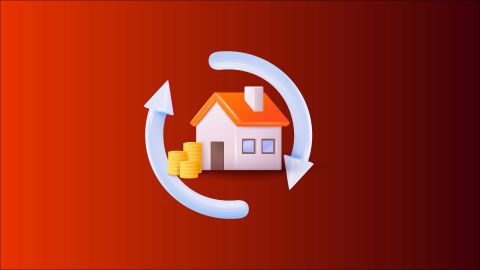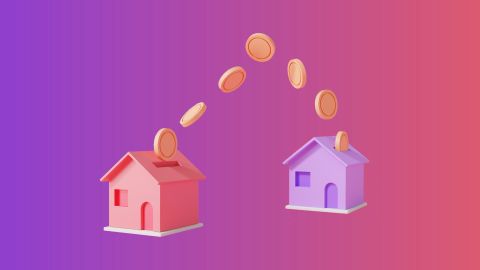The repo rate is the interest rate at which the Reserve Bank of India (RBI) lends money to commercial banks. When the RBI cuts this rate, the cost of borrowing for banks becomes lower. This encourages banks to lend more money at lower interest rates.
This year, the RBI has reduced the current repo rate fourth times. In the first two meetings of the Monetary Policy Committee (MPC), the RBI reduced the repo rate by 25 basis points (bps) each time. Whereas, in the third meeting, the RBI made a larger cut of 50 bps. In total, the repo rate has been reduced by 100 bps (or 1%) this financial year.
For home loan borrowers (particularly those with floating interest rates), this is good news as it can reduce their monthly EMI. However, please note that even after the RBI reduces the repo rate, banks do not always lower their loan interest rates immediately or fully.
Sometimes they delay passing on the benefit or only reduce interest rates slightly. Due to this delay in rate transmission, borrowers do not see quick or full relief in their EMIs.
Want to learn more? In this article, you will understand the reasons behind the RBI’s recent repo rate cuts, the likelihood of further reductions this year, and how these changes affect home loan EMIs and personal loan interest rates.
RBI cuts repo rate by 50 bps on 6th June 2025
On 5 December 2025, the Reserve Bank of India (RBI) lowered the repo rate by 25 basis points to 5.25%. Earlier in 2025, the RBI had already eased policy: in February the repo rate was cut from 6.50% to 6.25%, in April it fell to 6.00%, and on 6 June 2025 a larger 50-basis-point reduction brought the rate to 5.50%. Taken together, these moves amount to cumulative easing of 125 basis points from January 2025 to December 2025.
In tandem with the rate cuts, the RBI announced a 100-basis-point reduction in the Cash Reserve Ratio (CRR), lowering it from 4% to 3%. That CRR reduction is being implemented in four equal tranches of 25 basis points each, scheduled across the fortnights beginning 6 September, 4 October, 1 November and 29 November 2025. The phased approach is intended to release substantial primary liquidity into the banking system — estimated at roughly Rs 2.5 lakh crore by the end of November — so that banks have greater capacity to extend credit to households and businesses and support economic activity.
Why did the RBI cut the repo rate?
One of the main goals of the RBI is to keep inflation near 4%. Its acceptable range allows inflation to move within a range of 2% to 6%. In April 2025, the Consumer Price Index (CPI) inflation was 3.16%, which is lower than the 4% target.
Since inflation was under control, the RBI had the space to reduce the repo rate. By making a cut, the RBI is trying to support economic growth by making borrowing cheaper.
Can we expect the RBI to cut the repo rate further?
The RBI expects inflation, based on the Consumer Price Index (CPI), to be around 3.7% for the financial year 2025–26. This is within the RBI’s acceptable range, as the target is 4%. Because inflation is under control, the RBI had room to reduce interest rates earlier this year.
Since February 2025, the RBI has already cut the repo rate by 100 basis points. In his statement on 6th June, the RBI Governor said that after these rate cuts, there is limited scope left for further rate reductions.
As a result, the Monetary Policy Committee (MPC) has shifted its policy stance from "accommodative" (which supports growth by lowering rates) to "neutral" (which neither supports nor restricts growth).
This means the RBI will not commit to more rate cuts. However, future decisions on the repo rate will depend on upcoming economic data, such as:
Inflation rate and
Growth trends
Note that if inflation stays low and economic growth remains weak, more cuts may be considered. On the other hand, if inflation rises, the RBI may avoid further cuts or even raise rates.
If you're planning to buy a home and want to take advantage of these lower interest rates, now could be an ideal time to explore financing options. Bajaj Finserv offers competitive home loan rates starting from 7.45%* p.a Check your eligibility today. You may already be eligible, find out by entering your mobile number and OTP.
Impact of repo rate cut on home loan EMIs
The repo rate is the interest rate at which the RBI lends money to commercial banks. When the RBI reduces this rate (called a "repo rate cut"), banks can borrow money at a lower cost. This cheaper borrowing allows the banks to lower their own lending rates (including those for home loans).
However, the immediate effect of the repo rate cut on your home loan EMI depends on the type of interest rate your loan is linked to. There are two main types:
RLLR (Repo Linked Lending Rate) |
MCLR (Marginal Cost of Funds Based Lending Rate) |
|
and
|
How banks calculate RLLR-based loan interest
For RLLR-based loans, the bank takes:
The current repo rate (for example, 5.5%)
and
Adds a spread (usually 2.5% to 3%) for its costs and profit
So, the final home loan interest rate could be 8% to 8.5%. When the repo rate is reduced by 0.5%, the total interest rate also drops by the same amount (assuming the spread stays the same).
How does it impact the EMI
When the interest rate drops:
Your EMI becomes lower
or
The loan tenure reduces (happens when you choose to keep the EMI the same)
Let’s understand better through an example:
Say your loan amount is Rs. 40 lakh and the tenure is 20 years.
The old interest rate was 8.5%, and your EMI was Rs. 34,700.
Now, let’s say the new interest rate has been reduced to 8.0%.
This reduction will also reduce your EMI to Rs. 33,450.
This gives you a monthly saving of Rs. 1,250.
In this way, your total savings over the entire loan tenure will be between Rs. 3 lakh to Rs. 3.3 lakh (approx.)
With such significant savings possible from lower interest rates, securing a home loan at competitive rates becomes even more attractive. Bajaj Finserv provides loans up to Rs. 15 Crore* with flexible repayment options up to 32 years. Check your eligibility for a home loan from Bajaj Finserv now. You may already be eligible, find out by entering your mobile number and OTP.
When can the EMI reduction happen
If your loan is RLLR-based, you may see the EMI change from August 2025. However, if your loan is MCLR-based, the change may take time. It can possibly occur around December 2025 or later.
How is it beneficial in the long term
In a falling interest rate environment, RLLR loans benefit more. That’s because they respond quickly to repo rate cuts. As a result, borrowers with RLLR loans get faster EMI relief or complete their loans earlier.
Important Links: What is Home Loan | Home Loan Interest Rates | Home Loan Eligibility Criteria | Documents Required for Home Loan | Home Loan Balance Transfer | Joint Home Loan | Home Loan Tax Benefits | Home Loan Subsidy | Housing Loan Top Up | Rural Home Loans | Home Loan Process | Down Payment for Home Loan | Pre-approved Home Loan | Rural Home Loan | Home Loan Tenure
Impact of repo rate cut on personal loan interest rates
Besides home loans, a reduction in the repo rate also makes the personal loan cheaper. When the RBI lowers the repo rate, it in turn reduces the overall cost of borrowing of commercial banks. This reduction allows banks to lend money to individuals and businesses at lower interest rates.
Be aware that personal loans are unsecured loans. They are not backed by collateral and usually carry higher interest rates compared to secured loans, such as home loans. Therefore, any change in lending rates has a significant impact on personal loan borrowers.
The latest repo rate cut
In 2025, the RBI cut the repo rate by 125 basis points (or 1%) over four consecutive Monetary Policy Committee (MPC) meetings.
The purpose of this reduction was to stimulate economic activity by making borrowing cheaper for both individuals and businesses. As the cost of funds for banks comes down, they are expected to lower the lending rates on various loans, including personal loans.
How does the rate cut impact personal loan borrowers
Personal loan borrowers can benefit from repo rate cuts if their loans have floating interest rates linked to external benchmarks. Let’s understand how through an example:
Mrs. Z plans to take a personal loan of Rs. 10 lakh for a tenure of 5 years.
If the bank charges an interest rate of 12% per annum, her monthly EMI comes to Rs. 22,244.
Over 5 years (60 months), she pays a total of Rs. 13,34,667 to the bank.
Out of this, Rs. 3,34,667 is the interest paid on the loan.
Now, suppose the interest rate is reduced by 1% (from 12% to 11%) due to the repo rate cut. In that case, her EMI would come down to Rs. 21,742. Now, her total repayment over five years would also be reduced to Rs. 3,04,545.
This will allow Mrs. Z to enjoy savings of Rs. 30,122 (Rs. 3,34,667 - Rs. 3,05,545) over the entire loan tenure of 5 years. For more clarity, let’s understand this better through the table below:
Particulars |
Case I: No change in personal loan interest rate |
Case II: Reduction in personal loan interest rate |
Savings realised |
Loan amount |
Rs. 10,00,000 |
Rs. 10,00,000 |
|
Interest rate |
12% |
11% |
|
EMI |
Rs. 22,244 |
Rs. 21,742 |
|
Saving per month |
- |
- |
Rs. 502 |
Total interest paid over 5 years |
Rs. 3,34,667 |
Rs. 3,05,545 |
|
Total savings over 5 years |
- |
- |
Rs. 30,122 |
Please realise that this repo rate cut is not only expected to make personal loans cheaper but also reduce the interest rate charged for home loans, vehicle loans, credit cards, and more.
Whether you're looking for a personal loan or considering a home purchase, these rate cuts present excellent opportunities for borrowers. Bajaj Finserv offers comprehensive financing solutions with quick approval in just 48 hours*. Check your loan offers with Bajaj Finserv today. You may already be eligible, find out by entering your mobile number and OTP.
Apply for a home loan in different cities








